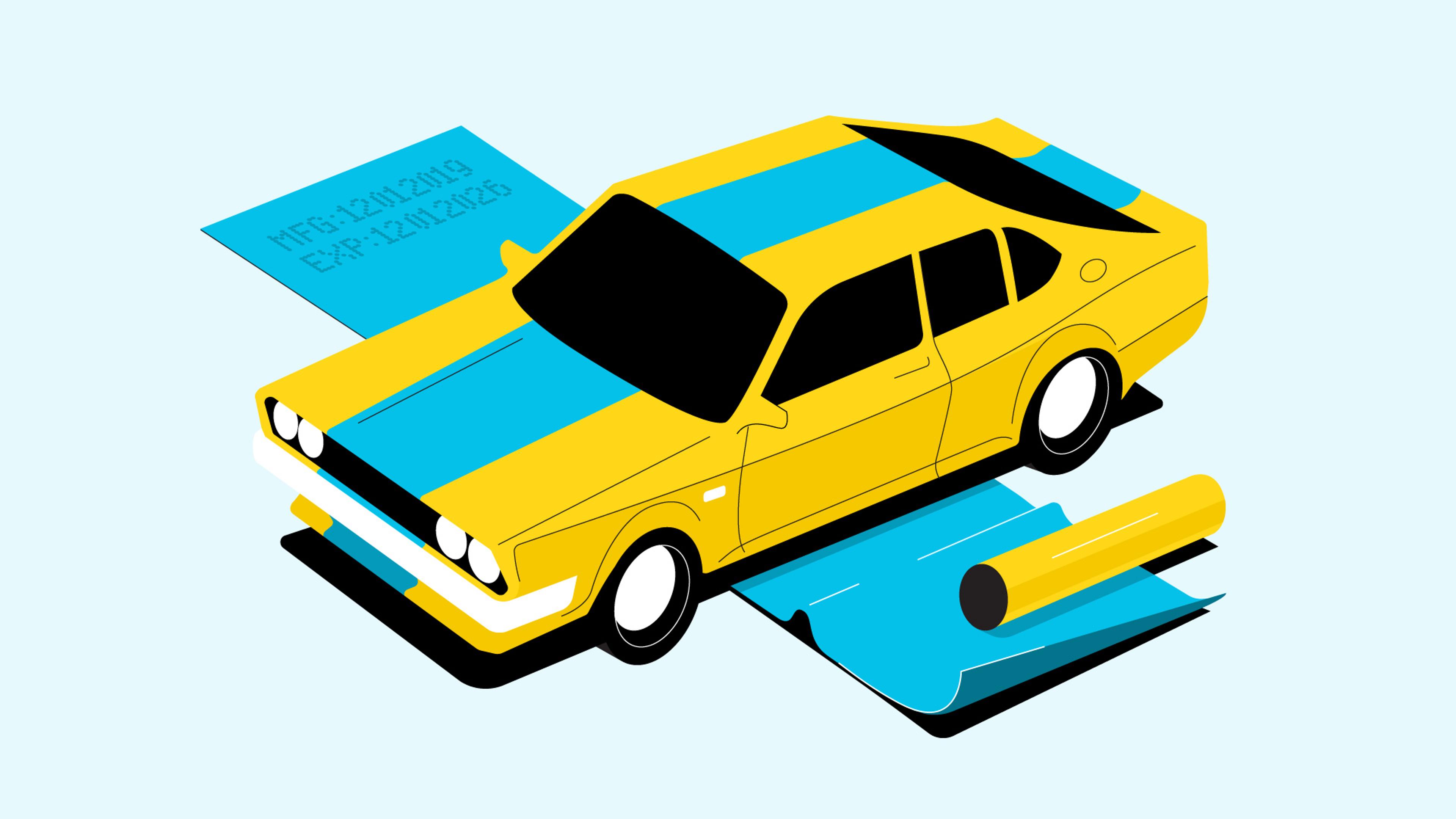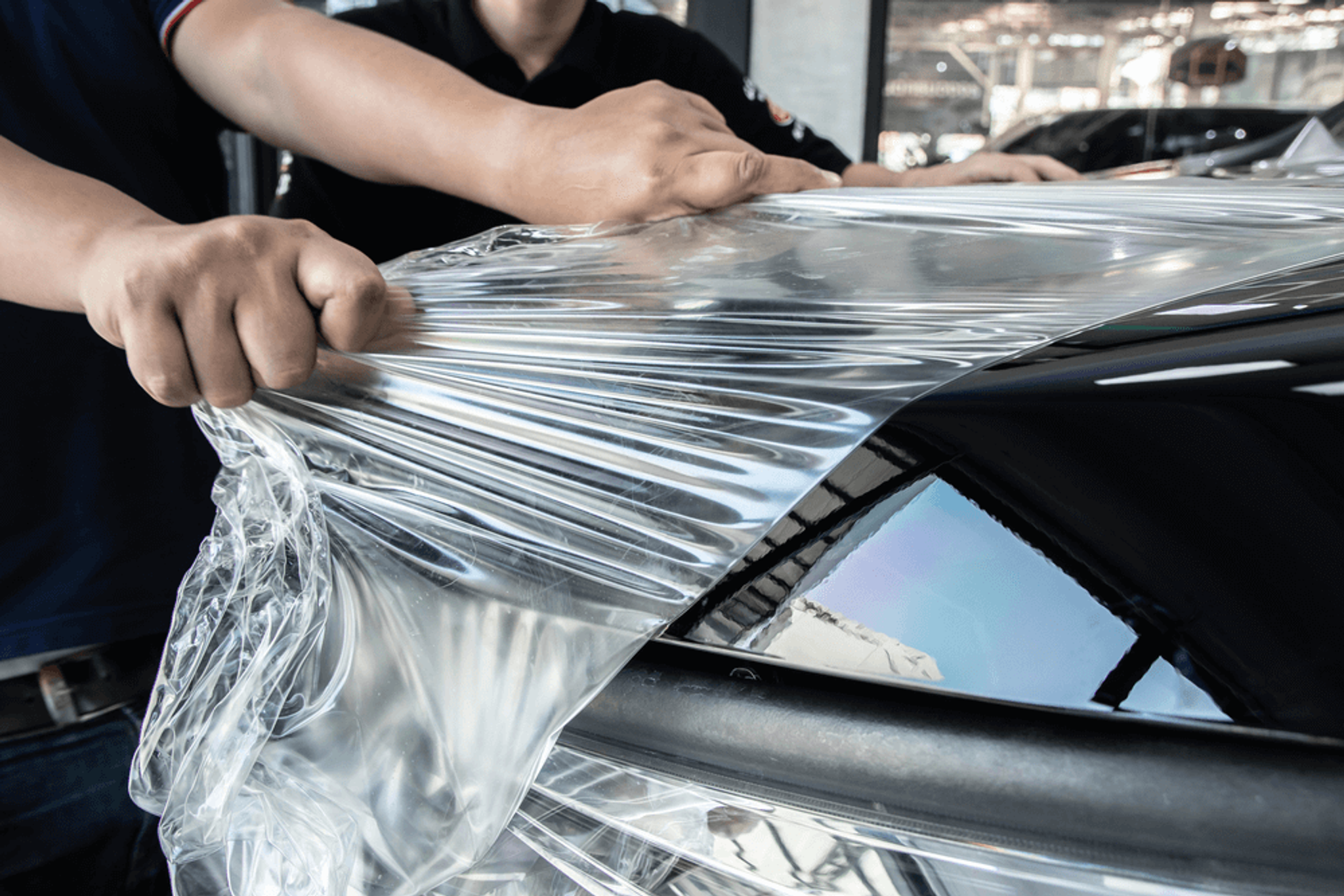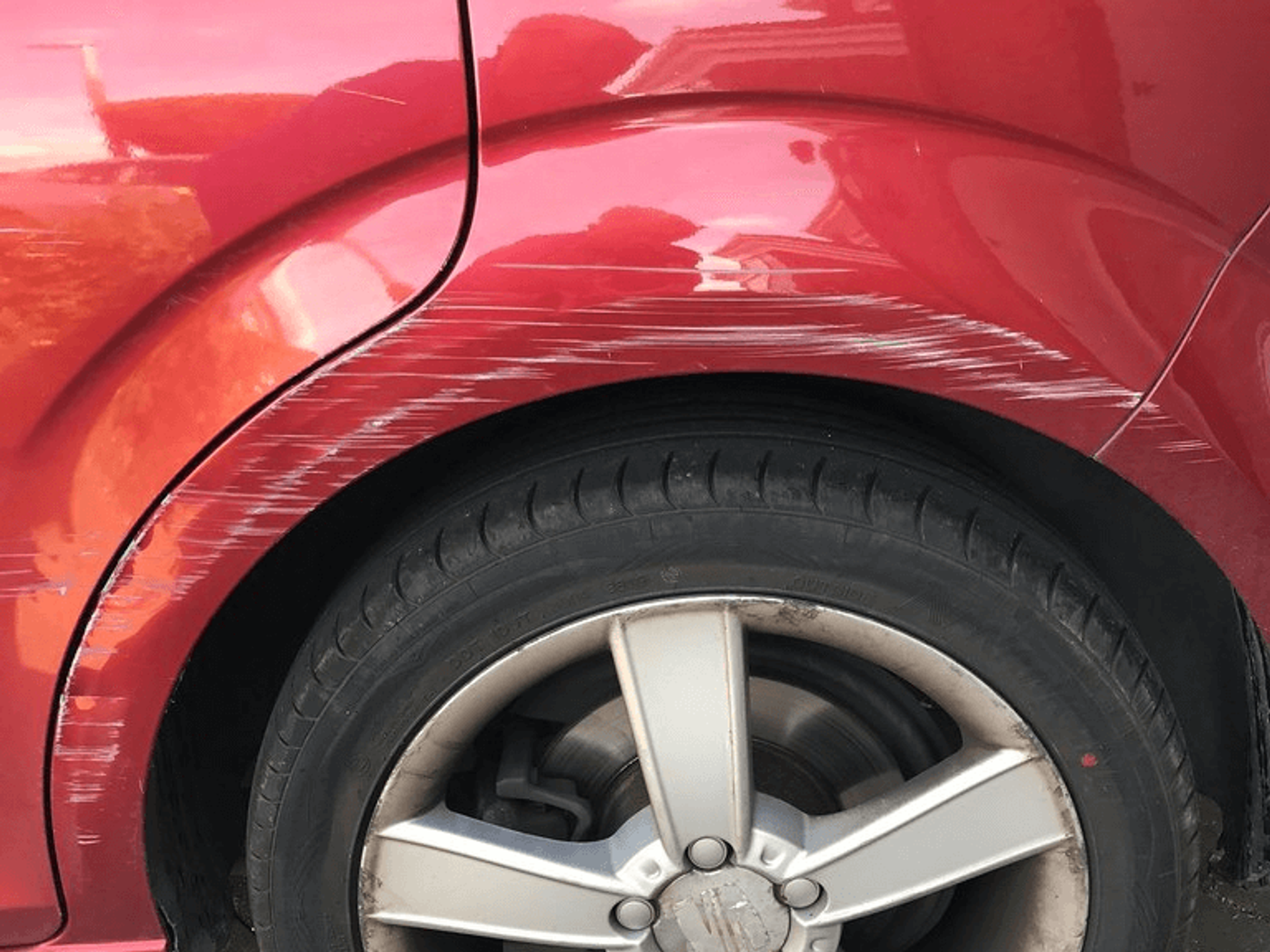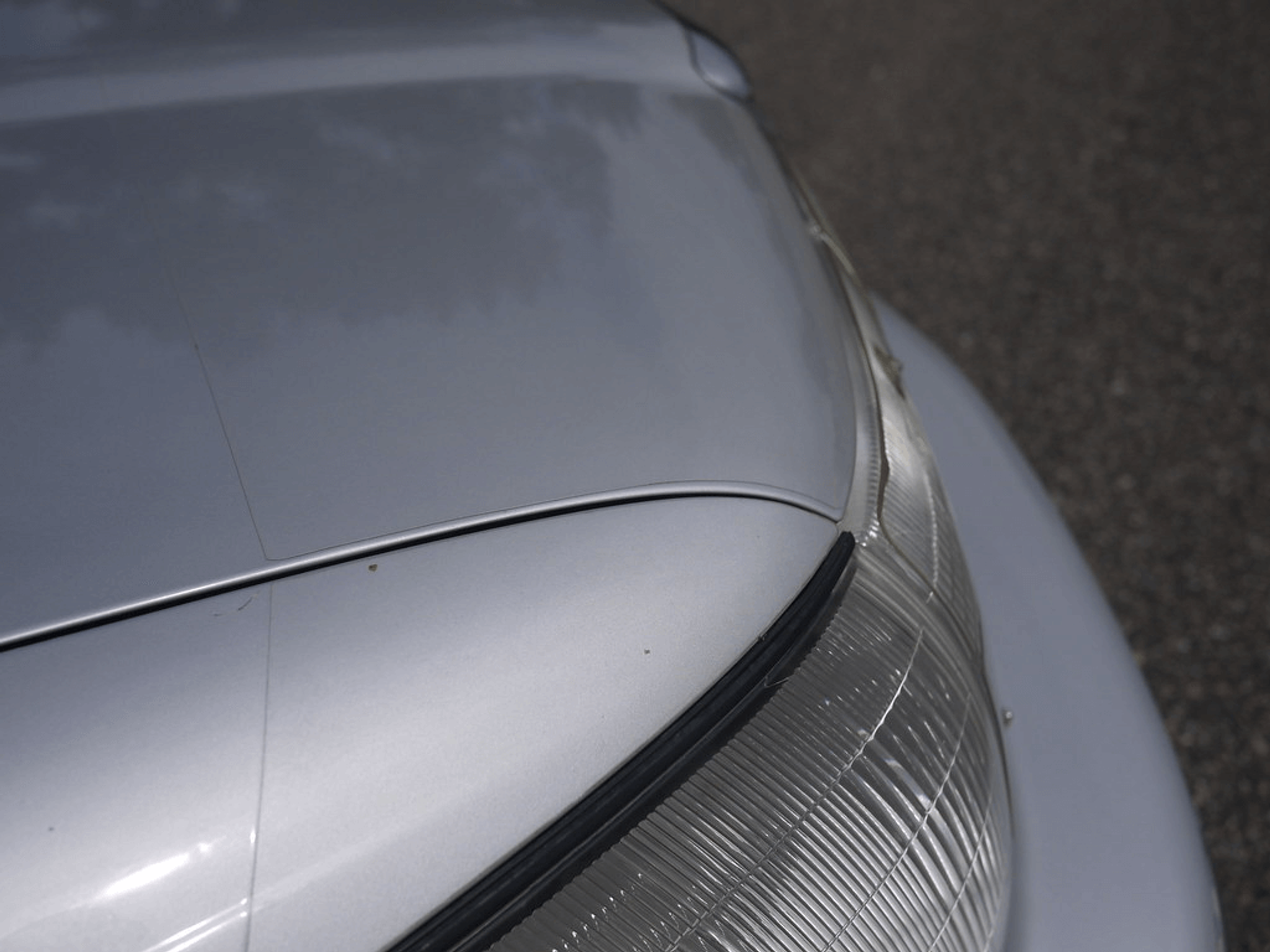
When choosing paint protection film (PPF), durability is one of the main concerns. PPF manufacturers typically provide a warranty for 2-8 years, but sometimes it only covers yellowing and cracking.
Car makers offer PPF as an optional extra, but how long does PPF last, and is it worth the price?

Looks can be deceiving!
Don't risk your safety - check it with carVertical first
What is the average lifespan of PPF?
On average, PPF lasts around 5-7 years until you need to replace it. As the film ages, it starts yellowing and cracking, resulting in reduced protection and worsened aesthetics. The yellowing layer is usually adhesive, so replacing the film is the only solution.

PPFs are very appreciated for their self-healing properties. However, while paint protective film shouldn’t start yellowing or cracking for 5-7 years, it loses gloss and self-healing properties after 2-3 years – it’s one of the first things to diminish as the film ages.
Understanding what paint protection film is can help you preserve this feature for longer. The base material of PPF is polyurethane – a flexible material with high load bearing capacity, meaning it can return to its original shape even after strong impacts. The main problem is that polyurethane has poor thermal capabilities, so it deteriorates faster in extreme temperatures.
You may have heard that PPFs start yellowing after 3-5 years, and while it was true with older films, modern ones are more durable and contain better materials. So, how long does paint protection film last strongly depends on its quality. Look for certified PPFs and installers if you want to enjoy good and long-lasting results.
What affects the longevity of PPF?
PPF would last the longest when applied on a car that’s sitting in a dark and dry garage. But since we need our cars every day, you should know what factors affect the longevity of paint protection film the most.
Thickness
The thickness of PPFs varies between 6 and 12 millimeters, but how much is enough?
In short, thicker films are more durable. For instance, a vinyl wrap is around 4 millimeters in thickness and provides little to no paint protection, so a 6-millimeter PPF also shouldn’t do wonders. However, a 12-mm PPF is 3 times thicker than a regular vinyl wrap, ensuring a much better protection against scratches and chemicals.
Installation
Paint protection film installation is very labor-intensive. The film can’t stretch as much as vinyl wrap, so you have to use pre-cut pieces, and push out the water using a squeegee. It takes about a week to fully cover a car with PPF, and even the slightest mistakes often lead to bubbling or peeling. Only certified professionals should do this job to avoid various issues.
Quality of PPF
Particular paint protection films are cheaper for a reason. Some manufacturers attract buyers by offering lower prices, which is achieved by saving on materials. That’s why cheaper films are often thinner, have poor clear coat layers, and even use cheap adhesive that isn’t as efficient and yellows prematurely. Choose only certified films – they will cost more initially, but save money in the long run.
Paint condition

One of the reasons why not all cars are worth PPF is their paint condition.
Thorough cleaning and polish are necessary before PPF installation, but any rock chips, corrosion, or other damages left under PPF create air pockets and can cause additional issues in the future. If your car’s paint is in bad condition, a repaint makes more sense than PPF.
Does PPF last longer than ceramic coating?
Ceramic coating is a more popular car paint protection method than PPF.
The preparation phase is similar for both ceramic coating and PPF – thoroughly washing, detailing, and polishing a car. However, the application of ceramic coating is much simpler, as it consists of softly buffing the product on a panel. It’s also way cheaper.
Which is better, paint protection film or ceramic coating, depends on your needs and budget. Ceramic coating lasts between 2 and 5 years and costs from $300 to $3,000. Both options are high-end and long-lasting, but PPF usually lasts a few years more, provides better protection, and offers self-healing properties.
How to extend the life of paint protection film?
Even though PPFs are durable, deeper scratches and improper care can easily damage them. In fact, you should care for PPF the same as you would for your paint because deep scratches, acid rain, UV rays, and bird droppings can harm it.
These essential tips will help you extend the life of your PPF.
Avoid automatic car washes
No matter what paint protection you’re using, automatic car washes are bad. Not only do they often leave water spots and cannot access wheel wells and other tight spots, automatic car washes also scratch your paint because brushes are often abrasive. And even if they’re new and soft, dirt gets trapped between bristles and scratches your clear coat or PPF.
Automatic car washes often are among exceptions in the PPF manufacturer’s warranty, meaning the lifespan may be shorter than stated in warranty if you wash your car in an automatic wash.
Don’t wash your car in sunlight
PPF is healing when it’s hot (in direct sunlight or when heated using a heat gun). The film is vulnerable in this state because the polyurethane layer softens and rearranges to remove scratches. Washing it in this state can damage self-healing properties, reduce gloss, and negatively impact overall protection. Wait for a cooler day to wash your car.
Be careful around edges

Always be careful around the edges of each panel when cleaning or washing your car because that’s where the film ends.
During installation, PPF is folded a little behind panels to achieve better looks and avoid accidental peeling. However, it may start peeling if you’re using a pressure washer or the film isn’t installed properly.
PPF manufacturers recommend not to apply pressure when washing the film, but if you do – don’t aim towards edges.
Don’t touch your recently installed PPF
Freshly installed PPF is very vulnerable, therefore, you must be careful to see if paint protection film is worth the money. Professionals recommend not touching the film for a few days and not pressing any bubbles, as they should disappear later on.
PPF requires a wet installation, therefore, the film holds moisture for at least a week. Don’t wash or wax a car for at least a week and, if possible, don’t drive it, too.

Check your VIN
Avoid costly problems by checking a vehicle's history. Get a report instantly!
Frequently asked questions

Article by
Evaldas Zabitis
Evaldas has been writing since middle school and has had a passion for cars for as long as he can remember. Right after getting his driver’s license, he spent all of his savings on shoddy cars so he could spend time fixing, driving, and selling them. Evaldas is always interested in automotive technical innovations and is an active participant in automotive community discussions.
